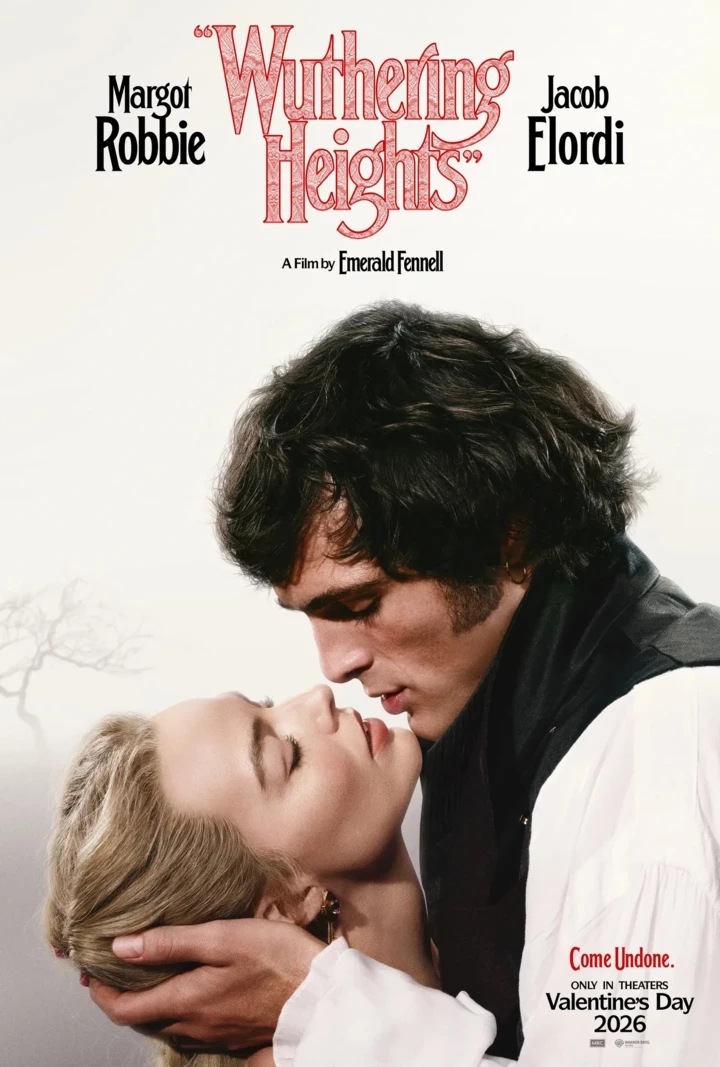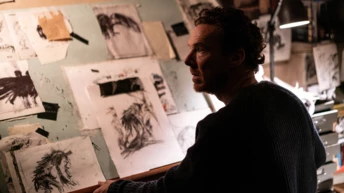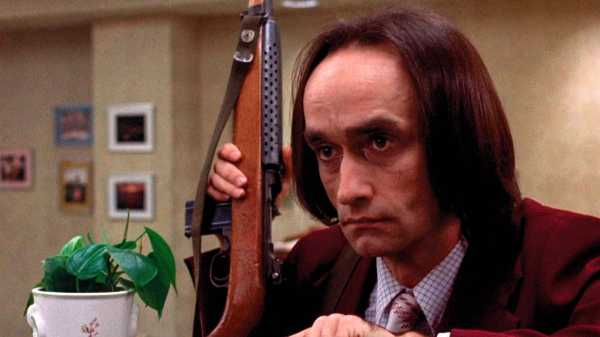
Save this storySave this storySave this storySave this storyYou’re reading the Goings On newsletter, a guide to what we’re watching, listening to, and doing this week. Sign up to receive it in your inbox.
With his sallow face and boulder-like forehead, John Cazale was one of the indelible character actors of the nineteen-seventies, but his career was tragically brief. He appeared in only five feature films—all Oscar nominees for Best Picture. He played, most famously, Fredo Corleone, the weakling brother, in the first two “Godfather” movies, as well as antsy sidekicks in “The Conversation” and “Dog Day Afternoon,” and the guy who doesn’t go to Vietnam in “The Deer Hunter,” which came out eight months after he died, of cancer, in 1978. He was forty-two.
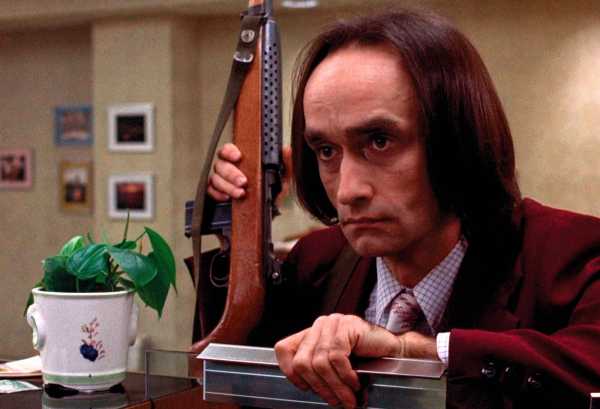
John Cazale in “Dog Day Afternoon.”Photograph from TCD / Prod.DB / Alamy
Cazale excelled at playing men with pronounced frailties—timidity, cowardice, dimness—in contrast to the more charismatic hero, the part taken by Al Pacino or Gene Hackman or Robert De Niro. But he did so with pathos and humor and a kind of heartrending innocence, even when portraying creeps and lowlifes. (In “Dog Day Afternoon,” Pacino’s bank robber asks Cazale, as his accomplice, which country he’d like to flee to, and he whispers, “Wyoming.” The line was apparently an ad-lib.) In 1976, Cazale met the young stage actress Meryl Streep, when they starred together in “Measure for Measure,” in Central Park, and they fell madly in love; Streep followed Cazale into the cast of “The Deer Hunter,” for her first major film role, and was at his bedside until the end. In that film, Cazale is visibly sick, but that only deepens his performance as the sad fool in a macho band of brothers. As Fredo, he’s also the runt of the litter, unable to measure up to the cutthroat family machismo, until his path of vice leads him to a tragic end.
To celebrate Cazale’s ninetieth-birthday year, and his ever-growing legend, Film Forum is running all five of his films, as well as Richard Shepard’s 2009 documentary, “I Knew It Was You: Rediscovering John Cazale,” June 13-19. (Shepard will appear at some screenings, and I’ll be introducing “The Deer Hunter” on the 16th.) It’s a chance not only to revisit a string of stone-cold classics of the New Hollywood but to pay closer attention to the guy who’s off to the side, filling his unglamorous characters with delectable grace notes.—Michael Schulman

About Town
Dancehall
In the nineteen-eighties, the Jamaican singer and d.j. Ophlin Russell became one of the most significant figures in dancehall music, as Sister Nancy. Dancehall, a child of reggae, was less downtempo, more open to electronics, and dominated by the “sound system”—groups of d.j.s who perform in clashes to determine the superior crew. Dancehall is a club culture, but Sister Nancy’s reputation was cemented in the studio. Her 1982 début, “One, Two,” is a genre landmark, including “Bam Bam,” among the greatest songs ever made. Performing alongside JonnyGo Figure, a local d.j. who carries on the musical legacy, the icon keeps stoking an eternal party.—Sheldon Pearce (Public Records; June 15.)
For more: read Carrie Battan on when “Bam Bam” was the song of the summer.
Classical
The phrase “intergalactic infinity” brings to mind a science-fiction movie—extraterrestrial activity, undiscovered planets, wormholes to other dimensions. It’s also this year’s slogan for the Music at the Anthology Festival, an event that has always felt otherworldly. Co-founded by Philip Glass, the festival aims to lift up young experimental composers, kicking off with Jessie Cox’s “Enter the Impossible,” played by the iconic Afrofuturist Sun Ra Arkestra and the contemporary-forward FLUX Quartet. Other nights feature such works as George Lewis’s explorative “String Quartet 1.5: Experiments in Living,” and the world première of Reza Vali’s quartet “Salmak.” Put your spacesuit on.—Jane Bua (ISSUE Project Room; June 11-14.)
Ballet
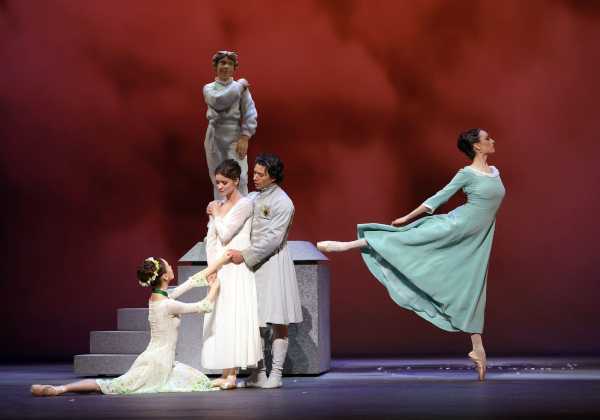
American Ballet Theatre performing Christopher Wheeldon’s “The Winter’s Tale.”Photograph by Marty Sohl
American Ballet Theatre’s residency at the Metropolitan Opera House is an occasion to bring out its grandest productions. These include “Swan Lake” and “Giselle,” but also the charming, lesser-known 1952 ballet “Sylvia” (July 8-12) by Frederick Ashton, set to Delibes. The company also performs Christopher Wheeldon’s “The Winter’s Tale” (July 1-5)—a deft adaptation of the late Shakespeare play—for the first time in New York. The Russian ballerina Olga Smirnova, who left the Bolshoi for Dutch National Ballet after the Russian invasion of Ukraine, makes a guest appearance in “Giselle” on June 21; and on July 18, the longtime principal dancer Gillian Murphy bids farewell to the stage with a final “Swan Lake.”—Marina Harss (Metropolitan Opera House; June 10-July 19.)
For more: read Joan Acocella on how Ashton’s work is “the apotheosis of the normal.”
Off Broadway
Beowulf Boritt’s blue-and-blushing-pink set for “The Imaginary Invalid,” Jeffrey Hatcher’s sparkling Molière adaptation (directed by Jesse Berger, for Red Bull Theatre), contains several surprises: portraits that open; naughty wallpaper vignettes that reward close inspection. The play’s hypochondriac paterfamilias Argan (Mark Linn-Baker) would benefit from more attention, too, though his doctors (Arnie Burton, in a variety of wigs) only see a fool. Berger’s tiny stage bulges like a clown car, stuffed with superb comedians such as Russell Daniels, playing a prospective son-in-law (and Grade A idiot) who shrieks around sick people, and Sarah Stiles, as a pert soubrette. At the show’s center is Linn-Baker, whose lambswool softness conceals a watchmaker’s perfectionism; the whole silly clockwork depends on his comic gears rotating precisely from joke to joke.—Helen Shaw (New World Stages; through June 29.)
Art

Installation view of “Ensemble.”Art work by Jennie C. Jones / Courtesy Metropolitan Museum of Art; Photograph by Hyla Skopitz
In the informative catalogue accompanying Jennie C. Jones’s “Ensemble” (on the Met’s roof), the artist talks about the inspiration behind her three large and elegant works, all acoustic sculptures based on string instruments—the trapezoidal zither, a tall Aeolian harp, and a doubled, leaning one-string. Jones has called the installation “site responsive,” and it is something to see the vast green of Central Park below and the grand homes in audience of these sculptures gleaming in the sun, housed in a powerful institution but taking their inspiration from the life and work of little-known American musicians, such as the harpist Dorothy Ashby and the one-string musician Louis Dotson. Jones’s deeply vibrant aluminum surfaces are suffused with the history of those who have been forgotten; they are also evidence of the artist’s continuing interest in how sound connects with image.—Hilton Als (Metropolitan Museum of Art; through Oct. 19.)
Movies
Hard on the heels of his metafictional rock doc “Pavements,” Alex Ross Perry is premièring his nearly three-hour archival documentary “Videoheaven” at the Tribeca Film Festival. A decade in the making, the new work considers how video stores have been depicted in movies, whether Hollywood, art house, or grind house. With a wall-to-wall commentary (delivered by Maya Hawke), Perry maps his themes—video stores as sites of horror, video rentals as social encounters, clerks as nerd gatekeepers—onto real-world changes, including the rise of local independent video stores, their replacement with corporate chains, and the demise of video stores in the age of streaming. With clips from more than a hundred movies, Perry channels an obsession into a fascinating encyclopedic form.—Richard Brody (Tribeca Film Festival; June 10-12.)
For more: read Brody on how the video store once served as film school.

What to Watch
Richard Brody’s streaming movie picks to kick off summer.

Still from “Apollo 10½: A Space Age Childhood.”
Production still courtesy Netflix
This month is the fiftieth anniversary of the release of “Jaws” (which I saw a few weeks after it opened, in 1975), and what makes it the supreme summer movie isn’t only that it’s the kind of sensational entertainment that befits the relaxation of the season but that the experience of watching it transforms one’s very idea of summer. (Yes, shark panic was real.) Here is a short list of great summer movies available to stream.
“Stranded” (1965, Juleen Compton)
Compton, a New York-based independent filmmaker, wrote, directed, and starred in this impetuous yet pain-shadowed romp through the Greek islands. She plays Raina, who, after a quick but tough breakup, travels with two men, an actor and a painter, on a grungy barge; she has an affair with a Greek boatman, she sings and dances, she dispenses philosophical wisdom, and, with uninhibited inventiveness from both sides of the camera, she outdoes “Jules and Jim” in reckless audacity and feminist freedom.
“Thunderbolt and Lightfoot” (1974, Michael Cimino)
Luscious Montana landscapes are the setting for a sunlit and bromantic film noir of outrageous comedy and explosive violence. Clint Eastwood stars as a preacher who ends up on a wild road trip with a dandified, happified, high-spirited drifter (Jeff Bridges, Oscar-nominated for his idiosyncratic performance); the result is an intricately plotted bank heist and a breathtaking, heartbreaking communion with nature.
“Losing Ground” (1982, Kathleen Collins)
A City College professor (Seret Scott) who has to do research when school’s out, and her husband, an artist (Bill Gunn) who craves the country life, head upstate for the summer and find that human nature proves to be a problem. Collins’s keenly observational romantic drama—one of the first features directed by a Black woman—undergirds personal passions with a framework of history and philosophy, and infuses the great outdoors with the imaginative power of art and legend.
“The Green Ray,” a.k.a. “Summer” (1986, Éric Rohmer)
Rohmer filmed many summer stories throughout his long career, and the greatest one (deriving its original title from a Jules Verne story, which figures in the action) is centered on a Parisian secretary (Marie Rivière) who spends most of her vacation trying to figure out where to go on vacation. She has a series of fascinating encounters and emotional disappointments in a variety of spectacular locations, until the romantic power of nature and the destiny-like power of chance take over.
“Apollo 10½: A Space Age Childhood” (2022, Richard Linklater)
In this wild and wondrous animated autobiographical fantasy, Linklater tells the story of a childhood in Houston, during the height of the space race, and how, during the summer of 1969, an elementary-school student ostensibly in sleepaway camp was actually in astronaut training at NASA for a moon launch. Linklater fuses the visionary spectacle of space exploration with a fine-grained and loving yet critical view of family and community at a time of grand civic ambitions and narrower private norms.
P.S. Good stuff on the internet:
- Sounds of many forests
- Is this the song of the summer?
- How to go to a bar
Sourse: newyorker.com



